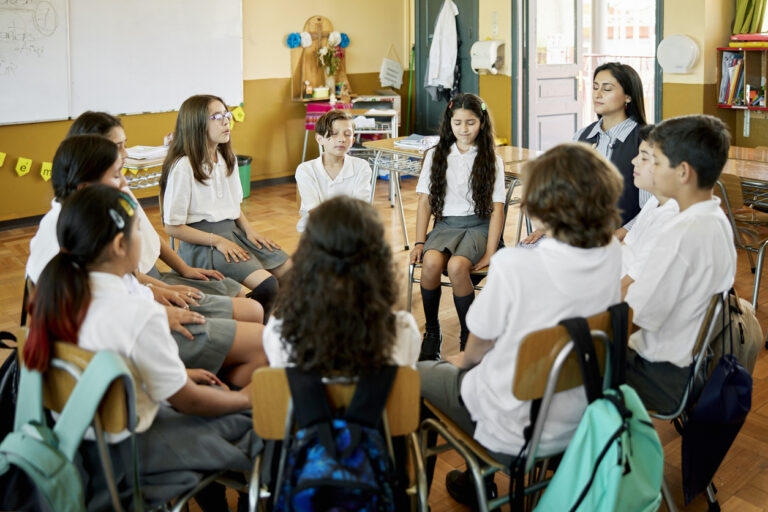In today’s fast-paced and demanding educational landscape, it’s crucial to understand the significant role of regulation, not just for students but also for educators. This article explores how institutional conditions within schools impact educators’ ability to regulate themselves and, consequently, their students. We delve into the neuro-sequential model, the neuroscience of human beings, and the importance of somatosensory activities in creating a positive and regulated learning environment.
The Impact of Institutional Conditions
The current educational system often creates challenging conditions for educators. The relentless demands and stressors can lead to dysregulation, overwhelm, and frustration among teachers. The neuro-sequential model suggests that educators play a pivotal role in the classroom as leaders. When they are dysregulated, it can have a cascading effect on the students, making it difficult to maintain a conducive learning environment.
The Social Contagion Effect
Human beings are inherently social creatures, and this social nature makes us remarkably sensitive to the emotions and states of those around us. When a teacher in the classroom feels dysregulated or exhausted, their cognitive abilities diminish, and their capacity to provide a regulating and rewarding environment is compromised. This phenomenon underscores the importance of supporting teachers and ensuring their well-being as a fundamental strategy for improving student outcomes.
The Role of Regulation in Education
To truly enhance cognitive and behavioural development in the classroom, it’s essential to prioritize the well-being of teachers. Creating an environment where educators are respected, supported, and provided with opportunities for self-care is key. Schools and organizations that acknowledge the social contagion effect and implement organizational care models alongside self-care measures witness remarkable transformations in outcomes. Data from such institutions validate the efficacy of this approach.
The Science Behind Regulation
Understanding the science behind regulation can shed light on why certain activities are effective. The brain’s primary mechanism for making sense of the world is through associating co-occurring sensory input. In early development, the rhythmic sensory input from the fetal body syncs with the mother’s heartbeat. This syncopated rhythm becomes associated with being regulated. As individuals grow, activities like rocking, rhythmic movement, and even chewing gum serve as regulatory tools by replicating these early associations.
Implementing Regulation in the Classroom
Educators can harness the power of regulation to create a more conducive learning environment. Starting the classroom with a few minutes of patterned, repetitive, and rhythmic activities, such as breathing exercises or simple movements, helps students prepare for learning. Additionally, incorporating short somatosensory breaks every 10 to 15 minutes can reset dysregulated students, ensuring they stay engaged and focused.
Transforming Education
The adoption of regulation-based strategies in education has shown significant promise. Schools that have embraced these principles have experienced a substantial reduction in behavioural issues. Educators learn to co-regulate rather than co-dysregulate, leading to fewer conflicts and disruptions in the classroom. Simple techniques, such as lowering one’s voice and providing students with time and space, can have a profound impact, reducing restraints and critical incidents by at least 30%.
Conclusion
In conclusion, the power of regulation in education cannot be overstated. By recognizing the social contagion effect and prioritizing the well-being of educators, we can create learning environments where students thrive, and behaviour problems decrease significantly. The science behind regulation provides insights into why certain activities are effective, making it easier for educators to implement these strategies in their classrooms. Ultimately, investing in the regulation of teachers leads to better outcomes for students and a brighter future for education as a whole.







